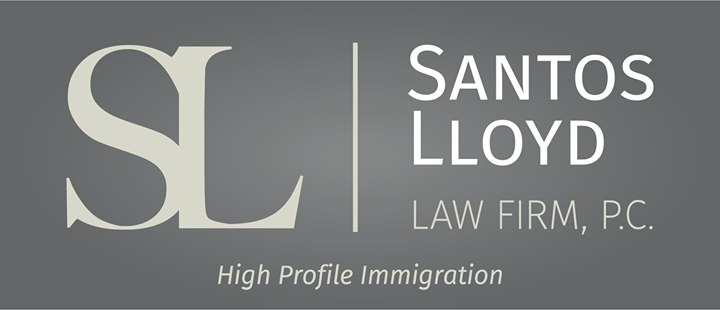DHS presenta propuesta para mejorar el programa de trabajadores con ocupaciones especializadas H-1B
Kris Quadros-Ragar • January 11, 2024
Click here to read this article in English
El Departamento de Seguridad Nacional de los EE. UU. (DHS), a través de los Servicios de Ciudadanía e Inmigración de los EE. UU. (USCIS), ha presentado un Aviso de reglamentación propuesta (NPRM) con el objetivo de modernizar el programa de trabajadores de ocupación especializada H-1B. Esta reforma propuesta tiene como objetivo simplificar los requisitos de elegibilidad, mejorar la eficiencia del programa, proporcionar mejores beneficios y flexibilidades tanto para los empleadores como para los trabajadores y reforzar las medidas para garantizar la integridad del programa.
El programa H-1B juega un papel vital al permitir que los empleadores estadounidenses recluten el talento que necesitan para satisfacer las demandas comerciales y mantener su competitividad en el ámbito global, al tiempo que cumplen con las protecciones legales de los trabajadores estadounidenses. Alejandro N. Mayorkas, Secretario de Seguridad Nacional, afirma que el DHS está comprometido a desarrollar e implementar regulaciones que agilicen los procesos para empleadores y trabajadores en el sistema de inmigración. La principal prioridad de la Administración Biden-Harris es atraer talento global, reducir cargas indebidas para los empleadores y combatir el fraude y el abuso en el sistema de inmigración.
Según el programa de visas de no inmigrante H-1B, los empleadores estadounidenses pueden emplear temporalmente a trabajadores extranjeros en ocupaciones especializadas que requieren conocimientos altamente especializados y una licenciatura o superior en el campo específico.
La regla propuesta describe cambios significativos, incluida una modificación en la forma en que USCIS lleva a cabo el proceso de selección de registro H-1B para reducir el potencial de uso indebido y fraude. El sistema actual permite una mayor probabilidad de selección en la lotería para las personas con más registros presentados en su nombre. Sin embargo, la propuesta sugiere que cada individuo con un registro presentado debería ingresar al proceso de selección una vez, independientemente del número de registros presentados. Este cambio tiene como objetivo nivelar el campo de juego y reducir el incentivo de presentar múltiples registros para el mismo beneficiario para aumentar sus probabilidades de selección. Además, podría ampliar las oportunidades laborales para los beneficiarios, ya que cada solicitante de registro con un beneficiario seleccionado tendría la opción de presentar una petición H-1B en su nombre.
La norma propuesta también introduce varias otras disposiciones, entre ellas:
- Simplificar los criterios de elegibilidad revisando los criterios para puestos de ocupaciones especializadas, reduciendo la confusión y aclarando que un puesto puede aceptar una variedad de títulos siempre que estén directamente relacionados con las funciones del puesto.
- Mejorar la eficiencia del programa al formalizar la práctica de los adjudicadores de aplazar determinaciones anteriores cuando no ha habido cambios en los hechos subyacentes durante una nueva presentación.
- Extender los beneficios y flexibilidades a empleadores y trabajadores, como ampliar las exenciones al límite H-1B para ciertas entidades sin fines de lucro, organizaciones gubernamentales de investigación y beneficiarios que no sean empleados directos de una organización calificada. También proporciona flexibilidad adicional para los estudiantes con visa F-1 que buscan cambiar su estatus a H-1B e introduce nuevos requisitos de elegibilidad H-1B para empresarios emergentes.
- Fortalecer las medidas de integridad evitando que entidades relacionadas presenten múltiples registros para el mismo beneficiario, facultando a USCIS para realizar visitas al sitio y aclarando que el incumplimiento de las visitas al sitio puede llevar a la denegación o revocación de la petición.
El NPRM (publicado aquí) invita a comentarios públicos durante un período de 60 días después de su publicación en el Registro Federal. Es fundamental tener en cuenta que estos cambios propuestos solo entrarán en vigor después de pasar por el proceso de finalización y recibir la aprobación mediante una revisión federal. Algunos de estos cambios pueden implementarse a tiempo para la temporada límite H-1B del año fiscal 2025, que se espera que comience a principios de 2024. USCIS ha indicado la posibilidad de implementar estos cambios de manera incremental a través de una o más publicaciones finales de reglas.
Fuente:
Enlace NPRM:
Este blog no pretende ser asesoramiento legal y nada aquí debe interpretarse como el establecimiento de una relación abogado-cliente. Programe una consulta con un abogado de inmigración antes de actuar según cualquier información leída aquí.

Once you have connected with a college program, have been admitted to the school, and deemed eligible to compete athletically, you will need to secure an F-1 student visa in order to actually attend your new college and begin your time as a student athlete. The first step in the visa process is to receive your Form I-2

For many talented athletes around the world, U.S. college athletics represent a remarkable opportunity to combine elite athletic competition with higher education. In sports such as basketball, soccer, track and field, and tennis, among others, hundreds of colleges and universities across the United States offer struct

Under the new regulation, if a person filed or files Form I-589, Application for Asylum and for Withholding of Removal after October 1, 2024, and the application remains pending with USCIS for 365 days, the applicant must pay an Annual Asylum Fee (AAF) on the one-year anniversary of his or her filing date.



